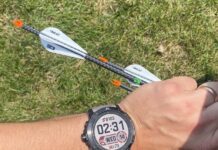What in the World is Functional Training?
By Robby Denning
I manage a Personal Training/Pilates Studio for a large health club in Idaho. Our staff of 24 personal trainers and Stott Pilates instructors is among the best in the Intermountain West. They have four to six year health & fitness-related degrees and hold some of the top certifications in the country. I’m lucky to have access to the most advanced cutting-edge fitness routines, and now, with Rokslide, so are you!

In the mid-90’s, a new type of training emerged called Functional Training that challenged much of what we as personal trainers had been taught. Back then, most of us were teaching body-building routines to build muscle and strength. While we were effective, the emerging data indicated that more muscle and strength did not always equal better performance and might lead to the opposite effect! Just because you can benchpress your body weight does not mean you’re going to get up the mountain any better or become injured any less than the deconditioned hunter.

Functional training is the science of training the body to meet the specific demands of life and sports (hunting, in our case). Sometimes Functional Training is best understood by defining what it is not. In traditional strength training, you work chest, then maybe triceps, then back, etc. Think of this as “isolating” muscle groups. Functional training does not isolate muscle groups, but instead, requires muscle groups from head to toe to work together to perform an exercise.
The way God designed out bodies is for our entire muscle, nerve, and skeletal systems to work together to perform a task. The body works best as a unit with muscles firing in a specific sequence to produce the desired movement.

When Functional Training, you usually perform exercises with your feet on the floor to create an unstable training environment that taxes all of your body systems. You train at every angle and in every plane because that more closely mimics real life and sports.
An example would be performing a dumbbell press on an anti-burst stability ball requiring that you balance and stabilize the body before you can exert force to move the dumbbells. Dozens or more muscles will participate in this movement.
Compare this to traditional strength training where you use machines or benches to stabilize the body so you can exert force. This training environment only uses about five or so muscles to perform the exercise. Depending on the exercise, Functional Training can use up to 200 muscles at once!
Traditional strength training builds muscle and strength for sure, but it’s not “functional” strength. In other words, you won’t necessarily be able to perform a task (i.e. drawing a bow while balancing on a steep slope) any better.
Example, I’m making a stalk on a buck 300 yards below me. I’ll likely use every muscle in my body in various movement planes as I crawl, squat, walk, and hold perfectly still. Just because each muscle might be strong, doesn’t mean I’m performing better if they can’t work together to perform the required task of the stalk. Functional Training would best prepare me for real-world movements.

Standard resistance training machines are of limited use for functional training – their fixed patterns rarely mimic natural movements, and they focus the effort on a very few muscle groups.
Some Functional Training options include:
- Stability balls(also called exercise balls or Swiss balls)
- Suspension system (like TRX)
- Cable machines
- Dumbbells (used without bench)
- Fitter board
- wobble boards
- Medicine balls
- Kettlebells
- Foam rollers
- Bodyweight training
- Resistance tubes
- Balance disks
- Fitwall
It is best to learn Functional Training from a qualified professional like a degreed and certified personal trainer or a physical therapist. You will have to ask if they are well versed in functional training as many are not.

If hiring a professional is out of your budget, I’d suggest purchasing a TRX and a stability ball and watching/reading everything you can about them you can. TRX’s are everywhere. The best stability balls are the Duraball available at Fitter1.com.
As far as where to train, I’m obviously biased, but I can tell you in 20 years of working with clients that most people do not follow through with home exercise programs. There are too many distractions at home and it is rarely a motivating environment. A great club will have the equipment and staff to support a serious exerciser and it’s harder to slack off if you’re surrounded by other people working hard.
Even a great club will be less than $70 monthly and if you are truly on such a tight budget you can’t afford that, there are other facilities with limited services available from $10 to $50 per month. I’m on budget as much as anyone, but can tell you that most people completely undervalue what a great club and a great trainer can offer you for a few hundred dollars investment. I know people who spend $4.00 a day on coffee ($120 a month) who won’t join an exercise program that would change their lives for the better. Don’t be one of them.


















